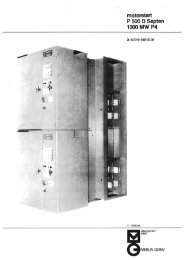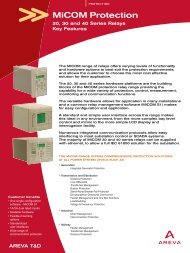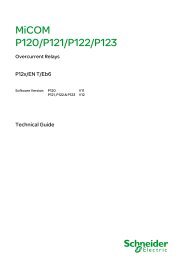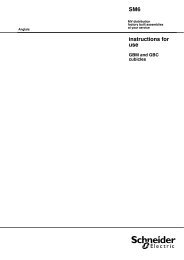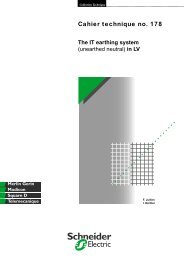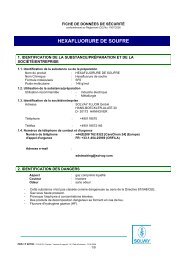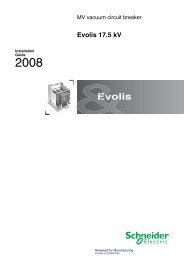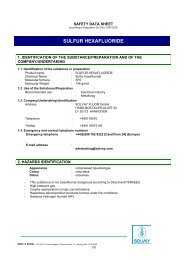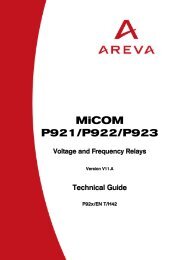Create successful ePaper yourself
Turn your PDF publications into a flip-book with our unique Google optimized e-Paper software.
During this interval, the neutral current alsoconsists of a positive wave and a negative wave,identical to those of the phase current. The rmsvalue of the neutral current can therefore becalculated as follows:I NI NIN1=T / ∫T /3 01= 3T ∫3in 2 dtT /03i n 2 dt1 T= 3 I = IT ∫ i 2 dt 30Here, therefore, the current in the neutralconductor has an rms value 3 times greaterthan that of the current in a phase.When the current wave of all three phasesoverlaps, as in the example in figure 17, the rmsvalue of the current in the neutral is less than3 times the rms value of the current in a phase(see fig. 18).In installations where a large number ofnon-linear loads, such as switch mode powersupplies for computer equipment, the current inthe neutral may therefore exceed the current ineach phase. This situation, although rare,requires the use of a reinforced neutralconductor.LThe most commonly adopted solution consistsof using a neutral conductor with a crosssectionwhich is double that of the phaseconductors. The protection and controlequipment (circuit-breaker, switches,contactors, etc) should be sized according tothe current in the neutral.(A)2001000-100-200(A)2001000-100-2000Fig. 17: Currents in all 3 phasest(s)0 0.020.04Fig. 18: Current in the neutralIrIsItt(s)0.02 0.042.3 Overload on the neutral conductor as a function of current distortionBalanced loadsConsidering that the third harmonic is thedominant harmonic, the distortion factor is veryclose to the third harmonic ratio. So:THD = i 3 (%)Moreover, as indicated in 2.1, the current in theneutral I N is very close to 3 I 3 . So:IN ≈ 3 I3(A)This can be expressed as:IN ≈ 3 i 3 I1 ≈ 3 THD I1Using the general formula:II1 = L21 + THDwe can obtain:IIN≈ 3 THDL21 + THDI⇒INL≈3 THD1 + THD2This approximate formula is only valid when theresult is less than 3 . The loading of the neutralcurrent therefore varies as a function of thedistortion factor as shown in the following graph(see fig. 19).I N /I L21.81.61.41.21.00.80.60.40.20 0 50 100 150Fig. 19: Loading of the neutral current (balancedloads)THD(%)Cahier Technique <strong>Schneider</strong> <strong>Electric</strong> no. 202 / p.9



